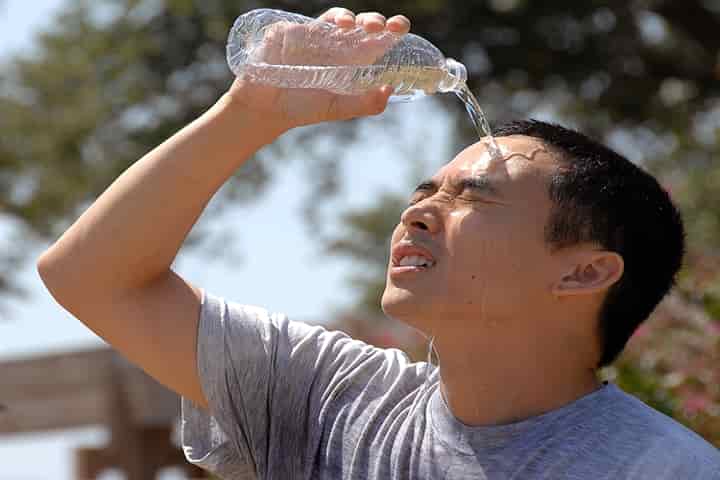It is not uncommon to hear people complain about summer heat with the phrase “it is the humidity that is killing”. While many of us will nod our heads in agreement, there is a basic science as to how humidity and its level, make the summer unbearable!
During the days when it is hot and humid, the skin feels sticky and overheated with breathing becoming hard. This is ascribed to humidity.
The days when the humidity is high one feels hotter than even the drier days. The reason being, the amount of water vapour or moisture which the air possesses makes it difficult to get rid of excess body heat through sweat.
On normal days, when we sweat, the beads that form on the skin evaporate into air due to the body heat and this results in cooling of the skin. Now, humidity is disrupts this. According to an article in livescience.com humidity, however, prevents sweat from evaporating as readily, because the surrounding air already has a high moisture content and can't absorb much more. With less moisture evaporating from the skin surface, the more one feels uncomfortably warm.
The high temperatures increase the ability of humidity to prevent regulation of temperature. The reason being warm air can hold more moisture than cool air can.
The National Oceanic and Atmospheric Administration's National Centers for Environmental Information, states that a 1-degree Fahrenheit (0.55-degree Celsius) increase in temperature results in as much as a 4 per cent increase in atmospheric water vapour. Thus, it becomes clear what makes humidity more unbearable in summer than in winter, despite the humidity level happening to be the same.
Besides making it stuffy and sticky on skin, the hot and humid air, also makes it tedious to breathe. The “heaviness” does not result from high water vapour content, according The Washington Post's Capital Weather Gang.
The water vapour molecules that replace some of dry air's nitrogen and oxygen are actually less dense. This means that moist air is actually lighter than dry air but since water vapour ousts small amounts of these gases, there's less oxygen in humid air to breathe in. With the bodies already overtaxed due to overheating, breathing becomes more than a normal work.
Even though there is not prescribed humidity threshold above which there is deterioration of general comfort level begins, NOAA views relative humidity levels of 50% or more, and dewpoints (a more direct measure of humidity) above 65 F (18 C) to be uncomfortably high.
What is indeed remarkable is that human body can adapt somewhat to high temperatures and high humidity. It may not be quick enough like for example spending a week on vacations in some tropical place.
Throwing light on this aspect, Larry Kenney, Professor of Physiology and Kinesiology at Penn State told Live Science: "It takes an average of nine to 14 days to fully acclimate, depending on one's fitness (level), body size and prior acclimation.”
Now for the process of heat acclimation. In the first stage, there is dilation of blood vessels allowing more blood to flow near the skin's surface, where excess heat can easily vent into the air outside of the body. While this going on, the dilated vessels translate into a lower heart rate thereby providing more fluid for sweating, according to Kenney.
He added that by three to five days, sweat rates start to increase. This adaptation is only temporary. Because just like how physical fitness and strength is lost if going to gym is skipped for a month, thermal adaptation also can wane if not exercised.
Kenny meanwhile is doing research as to what temperature-humidity combo is beyond human tolerance.




















